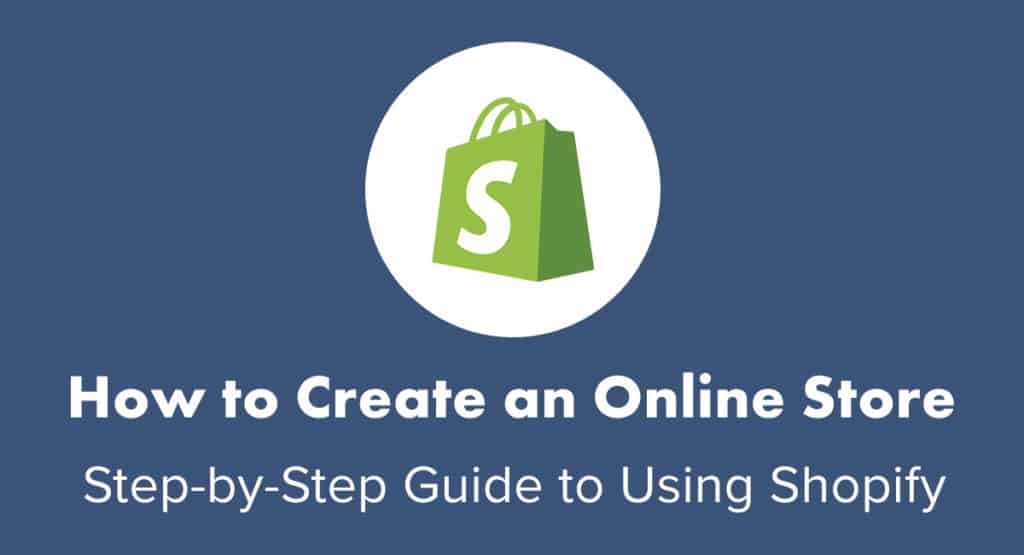Unlocking the Potential of Online T-Shirt Sales
Selling t-shirts online has become a lucrative business venture, with the global market projected to reach $10 billion by 2025. The rise of e-commerce and social media has made it easier for individuals to turn their designs into profitable online businesses. However, with so many players in the market, it can be challenging to stand out and succeed. To create and sell t-shirts online effectively, one needs to understand the intricacies of the industry and develop a well-thought-out strategy.
One of the primary advantages of selling t-shirts online is the low startup costs. With the help of online marketplaces and print-on-demand services, entrepreneurs can start selling their designs without holding any inventory. This reduces the financial risk and allows individuals to focus on marketing and promoting their products. Moreover, the internet provides a vast platform to reach a global audience, increasing the potential for sales and revenue.
Despite the opportunities, selling t-shirts online requires a deep understanding of the target audience, market trends, and consumer behavior. To succeed, entrepreneurs need to create designs that resonate with their audience, use effective marketing strategies, and provide excellent customer service. By mastering these skills, individuals can turn their passion into a profitable online business and capitalize on the growing demand for custom t-shirts.
For those looking to create and sell t-shirts online, the first step is to develop a solid understanding of the industry and its dynamics. This includes researching the market, identifying trends, and analyzing consumer behavior. By gaining insights into the industry, entrepreneurs can develop a well-informed strategy that sets them up for success. Whether you’re a seasoned designer or an aspiring entrepreneur, the world of online t-shirt sales offers a wealth of opportunities for those willing to put in the effort.
As the online t-shirt market continues to grow, it’s essential for entrepreneurs to stay ahead of the curve. By leveraging the latest design trends, marketing strategies, and e-commerce platforms, individuals can increase their chances of success and build a profitable online business. Whether you’re looking to supplement your income or build a full-time business, selling t-shirts online offers a flexible and lucrative opportunity that can be tailored to your needs and goals.
Designing for Success: Tips for Creating Best-Selling Tees
When it comes to selling t-shirts online, design plays a crucial role in capturing the attention of potential customers. A well-designed tee can make all the difference in standing out from the competition and driving sales. To create best-selling tees, it’s essential to understand the principles of good design and stay up-to-date with the latest trends.
One of the most critical aspects of designing a successful t-shirt is to understand your target audience. What type of designs do they like? What colors and typography appeal to them? By understanding your audience’s preferences, you can create designs that resonate with them and increase the chances of selling your tees. For example, if your target audience is young adults, you may want to focus on bold, eye-catching designs with bright colors and edgy typography.
Trends also play a significant role in designing successful t-shirts. Keeping up with the latest trends in fashion, music, and pop culture can help you create designs that are relevant and appealing to your target audience. For instance, if a particular TV show or movie is popular, you can create designs that reference it, increasing the chances of selling your tees to fans of the show.
In addition to understanding your audience and staying on top of trends, it’s also essential to focus on the technical aspects of design. This includes using high-quality images, selecting the right fonts, and ensuring that your designs are optimized for print. By paying attention to these details, you can create designs that look professional and polished, increasing the perceived value of your tees.
Another key aspect of designing successful t-shirts is to focus on simplicity and versatility. A simple design that can be worn in multiple settings is more likely to appeal to a wider audience than a complex design that may only appeal to a niche group. By keeping your designs simple and versatile, you can increase the chances of selling your tees to a broader audience.
Finally, it’s essential to test and refine your designs to ensure they are resonating with your target audience. This can be done by gathering feedback from friends, family, or potential customers, or by using online tools to test and refine your designs. By continually testing and refining your designs, you can increase the chances of creating best-selling tees that drive sales and revenue.
By following these tips and staying focused on creating high-quality designs that resonate with your target audience, you can increase the chances of selling your tees online and building a successful online business. Whether you’re just starting out or looking to expand your existing business, designing successful t-shirts is a critical component of how to create and sell t shirts online.
Choosing the Right Platform: A Comparison of Popular Online Marketplaces
When it comes to selling t-shirts online, choosing the right platform is crucial for success. With so many options available, it can be overwhelming to decide which platform is best for your needs. In this article, we’ll compare three popular online marketplaces: Redbubble, Teespring, and Shopify, highlighting their features, fees, and target audiences.
Redbubble is a popular platform for artists and designers who want to sell their work on a variety of products, including t-shirts. With a focus on print-on-demand, Redbubble allows sellers to upload their designs and sell them on a range of products without holding any inventory. The platform is free to use, with a base price for each product, and sellers can earn up to 20% commission on each sale.
Teespring is another popular platform for selling t-shirts online. With a focus on crowdfunding, Teespring allows sellers to create campaigns for their designs, setting a funding goal and a sale price. If the campaign reaches its funding goal, Teespring produces and ships the t-shirts, and the seller earns the difference between the sale price and the production cost. Teespring charges a base fee of $10 per shirt, and sellers can earn up to 50% commission on each sale.
Shopify is a comprehensive e-commerce platform that allows sellers to create their own online stores and sell a range of products, including t-shirts. With a focus on customization and flexibility, Shopify offers a range of templates and design options, as well as integrations with third-party apps and services. Shopify charges a monthly fee, starting at $29, and sellers can earn up to 100% commission on each sale.
When choosing a platform, it’s essential to consider your target audience and the type of products you want to sell. Redbubble is ideal for artists and designers who want to sell their work on a range of products, while Teespring is better suited for sellers who want to create crowdfunding campaigns for their designs. Shopify is a good option for sellers who want to create their own online stores and sell a range of products.
In addition to the platform’s features and fees, it’s also essential to consider the level of competition and the potential for sales. Redbubble and Teespring have a large customer base, but the competition can be fierce. Shopify, on the other hand, allows sellers to create their own online stores, which can be more challenging to drive traffic to, but offers more control over the sales process.
Ultimately, the right platform for you will depend on your specific needs and goals. By considering the features, fees, and target audiences of each platform, you can make an informed decision and start selling your t-shirts online. Whether you’re just starting out or looking to expand your existing business, choosing the right platform is a critical component of how to create and sell t shirts online.
Setting Up Shop: A Step-by-Step Guide to Creating an Online Store
Creating an online store is a crucial step in selling t-shirts online. With a professional-looking store, you can showcase your designs, attract customers, and increase sales. In this article, we’ll walk you through the process of setting up an online store, including choosing a domain name, selecting a theme, and customizing your store’s design.
Step 1: Choose a Domain Name
Your domain name is the web address that customers will use to access your online store. It’s essential to choose a domain name that is easy to remember, relevant to your brand, and available. You can use a domain name registrar such as GoDaddy or Namecheap to register your domain name.
Step 2: Select a Theme
Once you have your domain name, you need to select a theme for your online store. A theme is a pre-designed template that determines the layout and design of your store. You can choose from a variety of free and paid themes, depending on your needs and budget. Popular e-commerce platforms such as Shopify and WooCommerce offer a range of themes that you can use to create your online store.
Step 3: Customize Your Store’s Design
After selecting a theme, you need to customize your store’s design to reflect your brand and showcase your products. You can add your logo, change the colors and fonts, and add images and videos to make your store more engaging. You can also use a page builder to create custom pages and layouts for your store.
Step 4: Add Products and Collections
Once your store is set up, you need to add your products and collections. You can create individual product pages, add product descriptions and images, and organize your products into collections and categories. You can also use product variations to offer different sizes, colors, and styles of your t-shirts.
Step 5: Configure Payment and Shipping Options
Finally, you need to configure your payment and shipping options. You can use a payment gateway such as PayPal or Stripe to accept payments, and set up shipping options such as free shipping or flat-rate shipping. You can also use a shipping carrier such as USPS or UPS to calculate shipping costs and print shipping labels.
By following these steps, you can create a professional-looking online store that showcases your designs and attracts customers. Remember to keep your store up-to-date and optimized for search engines to increase your visibility and sales. With the right strategy and tools, you can turn your designs into a profitable online business and learn how to create and sell t shirts online.
Marketing Magic: How to Promote Your Tees and Reach a Wider Audience
Once you have created your online store and added your products, it’s time to promote your tees and reach a wider audience. Marketing is a crucial step in selling t-shirts online, as it helps you to increase visibility, drive traffic, and boost sales. In this article, we’ll discuss various marketing strategies for promoting t-shirts online, including social media marketing, influencer marketing, and paid advertising.
Social Media Marketing
Social media is a powerful marketing tool that can help you to reach a wider audience and promote your tees. Platforms such as Facebook, Instagram, and Twitter offer a range of features and tools that can help you to create engaging content, build a community, and drive sales. You can use social media to share high-quality images and videos of your products, engage with your customers, and run targeted ads.
Influencer Marketing
Influencer marketing is a form of marketing that involves partnering with influencers who have a large following on social media. Influencers can help you to promote your tees to their followers, increasing visibility and driving sales. You can partner with influencers who have a relevant niche or audience, and ask them to wear and promote your tees.
Paid Advertising
Paid advertising is a form of marketing that involves paying for ads to be displayed on search engines, social media, and other websites. Paid advertising can help you to reach a wider audience, drive traffic, and boost sales. You can use platforms such as Google AdWords and Facebook Ads to create targeted ads that reach your desired audience.
Email Marketing
Email marketing is a form of marketing that involves sending targeted emails to your customers and subscribers. Email marketing can help you to promote your tees, offer discounts and promotions, and build a loyal customer base. You can use email marketing software such as Mailchimp to create and send targeted emails.
Content Marketing
Content marketing is a form of marketing that involves creating and sharing valuable content to attract and engage with your target audience. Content marketing can help you to build trust and credibility with your customers, and promote your tees in a subtle and effective way. You can use content marketing to create blog posts, videos, and social media content that showcases your products and expertise.
By using these marketing strategies, you can promote your tees and reach a wider audience. Remember to track your results, analyze your data, and adjust your marketing strategy accordingly. With the right marketing strategy, you can increase visibility, drive traffic, and boost sales, and learn how to create and sell t shirts online.
Optimizing for Sales: How to Use SEO to Boost Your Online Visibility
Search engine optimization (SEO) is a crucial step in selling t-shirts online. By optimizing your product titles, descriptions, and tags, you can increase your online visibility, drive more traffic to your store, and boost sales. In this article, we’ll explain the importance of SEO in selling t-shirts online and provide tips on how to optimize your products for better visibility in search results.
Why is SEO Important?
SEO is important because it helps your products to appear in search results when customers search for keywords related to your products. By optimizing your products for SEO, you can increase your chances of appearing in search results, driving more traffic to your store, and boosting sales.
How to Optimize Product Titles
Product titles are one of the most important elements of SEO. They should be descriptive, concise, and include the most relevant keywords. When writing product titles, make sure to include the following elements:
- Product name
- Brand name
- Keywords (e.g. “t-shirt”, “tee”, “apparel”)
- Color and size options
How to Optimize Product Descriptions
Product descriptions are another important element of SEO. They should be detailed, descriptive, and include the most relevant keywords. When writing product descriptions, make sure to include the following elements:
- Product features and benefits
- Materials and construction
- Size and fit information
- Keywords (e.g. “t-shirt”, “tee”, “apparel”)
How to Optimize Product Tags
Product tags are another important element of SEO. They should be relevant, concise, and include the most relevant keywords. When writing product tags, make sure to include the following elements:
- Product name
- Brand name
- Keywords (e.g. “t-shirt”, “tee”, “apparel”)
- Color and size options
By optimizing your product titles, descriptions, and tags, you can increase your online visibility, drive more traffic to your store, and boost sales. Remember to use relevant keywords, be descriptive and concise, and make sure to include all the necessary elements. With the right SEO strategy, you can learn how to create and sell t shirts online and take your business to the next level.
Providing Excellent Customer Service: Tips for Building a Loyal Customer Base
Providing excellent customer service is crucial for building a loyal customer base and driving repeat business. When selling t-shirts online, it’s essential to respond to customer inquiries, handle returns and refunds, and encourage customer feedback. In this article, we’ll provide tips on how to provide excellent customer service and build a loyal customer base.
Responding to Customer Inquiries
Responding to customer inquiries is a critical aspect of providing excellent customer service. When a customer contacts you with a question or concern, it’s essential to respond promptly and professionally. Make sure to address the customer’s question or concern, and provide a solution or alternative if possible.
Handling Returns and Refunds
Handling returns and refunds can be a challenging aspect of selling t-shirts online. However, it’s essential to have a clear return and refund policy in place to ensure customer satisfaction. Make sure to clearly outline your return and refund policy on your website, and provide a hassle-free return and refund process for customers.
Encouraging Customer Feedback
Encouraging customer feedback is an excellent way to build a loyal customer base and improve your products and services. Make sure to ask customers for feedback on their purchases, and respond to any concerns or suggestions they may have. This will show customers that you value their opinion and care about their satisfaction.
Using Customer Service Software
Using customer service software can help you to manage customer inquiries, returns, and refunds more efficiently. There are many customer service software options available, including Freshdesk, Zendesk, and Help Scout. These software options can help you to provide excellent customer service and build a loyal customer base.
Providing Multichannel Support
Providing multichannel support is essential for building a loyal customer base. Make sure to provide support through multiple channels, including email, phone, and social media. This will ensure that customers can contact you through their preferred channel, and receive prompt and professional support.
By providing excellent customer service, you can build a loyal customer base and drive repeat business. Remember to respond to customer inquiries, handle returns and refunds, and encourage customer feedback. With the right customer service strategy, you can learn how to create and sell t shirts online and build a successful online business.
Scaling Your Business: How to Expand Your Online T-Shirt Empire
Scaling an online t-shirt business requires careful planning and execution. As your business grows, you’ll need to expand your product lines, manage inventory, and outsource production to meet demand. In this article, we’ll provide guidance on how to scale your online t-shirt business and take it to the next level.
Outsourcing Production
Outsourcing production is a crucial step in scaling your online t-shirt business. By partnering with a reliable supplier, you can ensure that your products are made to high standards and delivered on time. Look for suppliers that offer competitive pricing, high-quality products, and excellent customer service.
Managing Inventory
Managing inventory is essential for scaling your online t-shirt business. You’ll need to keep track of your stock levels, monitor demand, and adjust your inventory accordingly. Consider using inventory management software to streamline your operations and reduce waste.
Expanding Product Lines
Expanding your product lines is a great way to scale your online t-shirt business. Consider adding new products, such as hoodies, hats, or accessories, to appeal to a wider audience. You can also experiment with new designs, colors, and styles to keep your products fresh and exciting.
Building a Team
As your business grows, you’ll need to build a team to help you manage your operations. Consider hiring staff to handle customer service, marketing, and production. You can also outsource tasks to freelancers or agencies to save time and money.
Investing in Technology
Investing in technology is essential for scaling your online t-shirt business. Consider using e-commerce software, such as Shopify or WooCommerce, to manage your online store and streamline your operations. You can also use social media management tools, such as Hootsuite or Buffer, to schedule and publish your social media content.
By following these tips, you can scale your online t-shirt business and take it to the next level. Remember to stay focused on your goals, adapt to changes in the market, and continually improve your operations to ensure long-term success. With the right strategy and tools, you can learn how to create and sell t shirts online and build a thriving online business.







